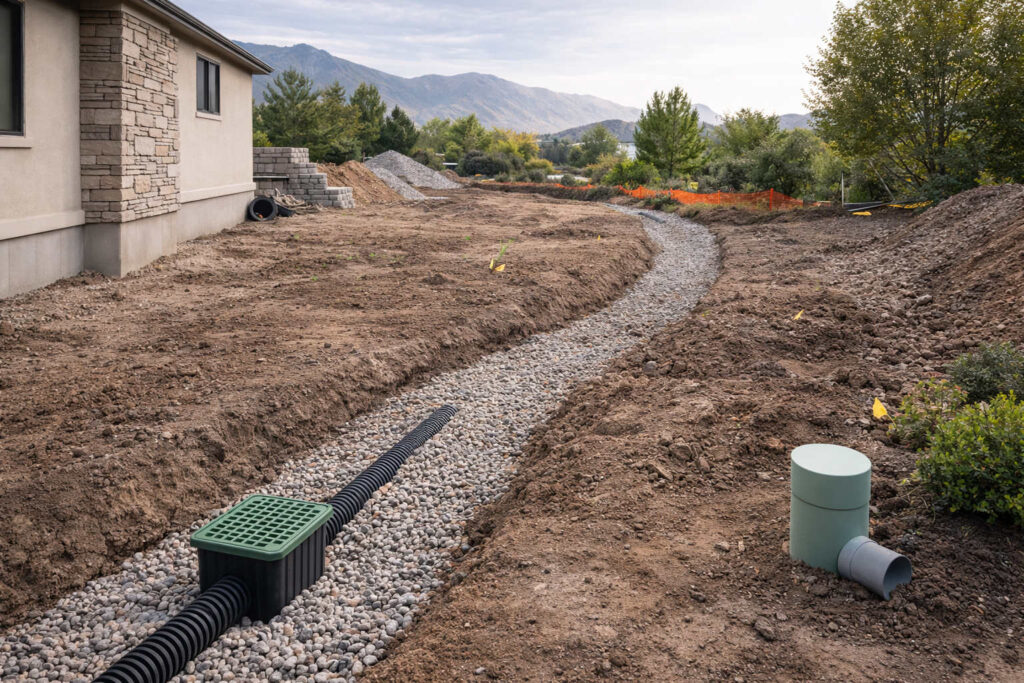Maintaining a pristine and professional landscape is crucial for commercial properties. Weeds not only detract from the aesthetic appeal but also compete with desirable plants for nutrients and water. Effective weed control and maintenance strategies are essential for ensuring that your commercial property remains attractive and inviting. In this detailed guide, we will explore various weed control methods and maintenance practices to keep your commercial landscape in top condition year-round.
The Importance of Weed Control in Commercial Properties
Weed control is a vital aspect of landscape maintenance for commercial properties. Here’s why it matters:
Enhances Curb Appeal A well-maintained, weed-free landscape creates a positive first impression and reflects the professionalism of your business. Clean, manicured grounds are more inviting to clients, customers, and employees.
Promotes Plant Health Weeds compete with desirable plants for water, nutrients, and sunlight. Effective weed control ensures that your plants have access to the resources they need to thrive.
Reduces Maintenance Costs Proactive weed management can prevent the spread of invasive species and reduce the need for costly corrective measures. Regular maintenance helps keep your landscape in good condition and minimizes the need for extensive interventions.
Ensures Safety Overgrown weeds can obstruct walkways, driveways, and parking lots, creating safety hazards for pedestrians and vehicles. Maintaining clear, weed-free areas enhances the safety of your property.
Types of Weeds Commonly Found in Commercial Landscapes
Understanding the types of weeds commonly found in commercial landscapes is essential for effective control. Weeds are typically categorized into three types:
Broadleaf Weeds Broadleaf weeds, such as dandelions, clover, and chickweed, have broad, flat leaves. They can be particularly troublesome in lawns and garden beds.
Grassy Weeds Grassy weeds, such as crabgrass, quackgrass, and foxtail, resemble grass but grow more aggressively. They can quickly take over lawns and landscaped areas if not controlled.
Sedge Weeds Sedge weeds, such as nutsedge, have triangular stems and grow in clumps. They thrive in moist, poorly drained soils and can be challenging to eradicate.
Effective Weed Control Methods
Manual Weed Removal Manual removal is an effective method for controlling weeds, especially in small areas or garden beds. Techniques include:
- Hand Pulling: Remove weeds by hand, ensuring that the entire root system is extracted to prevent regrowth.
- Hoeing: Use a hoe to cut weeds at the soil surface. This method is effective for shallow-rooted weeds.
- Weeding Tools: Specialized weeding tools, such as weed pullers and cultivators, can make manual removal easier and more efficient.
Mulching Mulching is a highly effective weed control strategy that also offers additional benefits, such as moisture retention and temperature regulation. Key practices include:
- Organic Mulch: Apply a layer of organic mulch, such as wood chips, straw, or shredded leaves, around plants and garden beds. A 2-4 inch layer helps suppress weed growth and improves soil health.
- Landscape Fabric: Use landscape fabric under mulch to provide an additional barrier against weeds. Ensure the fabric is permeable to allow water and air to reach plant roots.
Chemical Weed Control Herbicides are a common and effective tool for controlling weeds in commercial landscapes. Types of herbicides include:
- Pre-Emergent Herbicides: Apply pre-emergent herbicides in early spring to prevent weed seeds from germinating. This method is effective for controlling annual weeds.
- Post-Emergent Herbicides: Use post-emergent herbicides to target actively growing weeds. These herbicides can be selective (targeting specific weeds) or non-selective (killing all vegetation).
Cultural Practices Incorporating cultural practices into your maintenance routine can help prevent weed growth and promote a healthy landscape. Strategies include:
- Proper Mowing: Maintain the recommended mowing height for your grass type. Taller grass shades the soil, reducing weed seed germination.
- Irrigation Management: Water deeply and infrequently to promote deep root growth. Avoid overwatering, as it can create conditions favorable for weed growth.
- Soil Health: Improve soil health by adding organic matter and ensuring proper drainage. Healthy soil supports vigorous plant growth and reduces weed competition.
Maintenance Strategies for Weed Control
Regular Inspections Conduct regular inspections of your commercial landscape to identify and address weed issues early. Prompt action can prevent weeds from spreading and becoming more challenging to control.
Weed Control in Parking Lots and Hardscapes Maintaining weed-free parking lots, walkways, and hardscapes is essential for a professional appearance. Strategies include:
- Crack Sealing: Seal cracks in asphalt and concrete surfaces to prevent weed growth.
- Herbicide Application: Use non-selective herbicides to control weeds in cracks and edges of hardscapes.
- Sweeping and Cleaning: Regularly sweep and clean hardscape areas to remove debris and weed seeds.
Professional Lawn Care Services Consider hiring professional lawn care services for expert weed control and landscape maintenance. Professionals have access to specialized tools, products, and knowledge to manage weeds effectively and maintain a pristine commercial landscape.
Integrated Pest Management (IPM) Implement an Integrated Pest Management (IPM) approach for sustainable weed control. IPM combines multiple strategies to manage weeds while minimizing environmental impact. Components of IPM include:
- Monitoring: Regularly monitor weed populations and landscape conditions.
- Prevention: Use cultural practices, mulching, and proper plant selection to prevent weed establishment.
- Control: Apply mechanical, chemical, and biological control methods as needed.
Long-Term Weed Management
Landscape Design Design your commercial landscape with weed control in mind. Consider the following design principles:
- Plant Selection: Choose native and adapted plants that compete well with weeds and require minimal maintenance.
- Plant Density: Plant densely to reduce open spaces where weeds can establish.
- Hardscaping: Incorporate hardscaping elements, such as patios, walkways, and decorative gravel, to minimize vegetative areas.
Seasonal Maintenance Adapt your weed control and maintenance practices to seasonal changes. Key activities include:
- Spring: Apply pre-emergent herbicides, mulch garden beds, and conduct soil tests.
- Summer: Maintain proper irrigation, mow regularly, and monitor for weeds.
- Fall: Apply post-emergent herbicides, remove fallen leaves, and prepare the landscape for winter.
- Winter: Plan for the upcoming season, maintain equipment, and address any remaining weed issues.
Effective weed control and maintenance strategies are essential for maintaining a pristine and professional commercial landscape. By incorporating manual removal, mulching, chemical control, and cultural practices into your maintenance routine, you can keep your property weed-free and attractive year-round. Regular inspections, professional services, and long-term planning will ensure your commercial landscape remains a welcoming and impressive environment for clients, employees, and visitors.
”);


